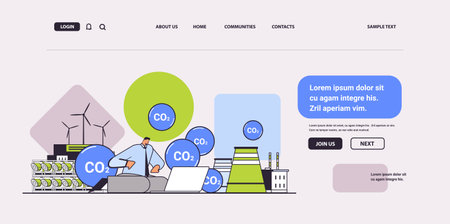Introduction to Robots.txt in the Modern Web
In today’s digital landscape, the humble robots.txt file has become a fundamental tool for website owners and developers managing how search engines interact with their content. Originally designed as a straightforward method for webmasters to communicate with crawlers, robots.txt now sits at the heart of sophisticated SEO strategies and privacy protocols. As search engines like Google, Bing, and others continue to evolve, the importance of effectively managing web crawling and indexing through robots.txt is more relevant than ever. The file serves as the first line of defense in controlling which parts of a website are accessible to bots—impacting everything from site performance to user privacy. With new standards and best practices emerging, understanding the current state and foundational role of robots.txt is crucial for anyone serious about optimizing their presence on the modern web.
2. Recent Developments and Challenges
As digital landscapes evolve, the robots.txt standard faces significant new challenges that impact its effectiveness. Modern websites are no longer static; dynamic content generation, advanced bots, and shifting search engine algorithms all test the limits of this long-standing protocol.
Dynamic Content and Real-Time Updates
Traditionally, robots.txt was designed for relatively static websites. Today, many sites serve highly dynamic content—think real-time news updates, personalized feeds, or user-generated sections. These dynamic elements often live outside predictable URL structures, making it tough for robots.txt rules to keep pace. As a result, site owners find themselves struggling to restrict access to sensitive or irrelevant areas without accidentally blocking essential resources.
Advanced Bots: More Than Just Crawlers
Another key challenge is the evolution of bots themselves. While robots.txt was originally intended for search engine crawlers, a wave of sophisticated bots now scour the web—ranging from legitimate API consumers to malicious scrapers and automated vulnerability scanners. Not all these bots respect robots.txt directives, leading to data leakage or server overloads even when well-crafted rules are in place.
| Bot Type | Typical Behavior | Respect Robots.txt? |
|---|---|---|
| Search Engine Crawlers (Googlebot, Bingbot) | Index site content for search results | Yes (usually) |
| API Aggregators | Collect data for third-party platforms | Sometimes |
| Malicious Scrapers/Scanners | Harvest data or probe for vulnerabilities | No |
The Evolving Search Engine Landscape
The way search engines interpret robots.txt is also changing. Some engines have introduced their own proprietary extensions or support additional directives (like crawl-delay), while others may phase out support for certain legacy rules. With voice search and AI-driven content discovery on the rise, conventional robots.txt guidance may not always align with how content is actually indexed and displayed to users.
Key Takeaways for Webmasters
- Stay Updated: Monitor changes in bot behavior and search engine policies regularly.
- Layer Security: Use robots.txt alongside other security tools like authentication and rate limiting.
- Aim for Flexibility: Design rules that can adapt as your site structure evolves over time.
This landscape demands a more nuanced approach to managing crawler access—one that anticipates both technical innovation and shifts in online behavior. Webmasters must be proactive about revisiting their robots.txt strategies to remain effective in an increasingly complex environment.

3. Emerging Standards and Protocol Updates
As the digital landscape continues to evolve, so too does the need for a more robust and standardized robots.txt protocol. For years, webmasters relied on unofficial conventions for managing crawler access, but recent efforts by major organizations are pushing toward greater standardization. Google, one of the primary stakeholders in web crawling, has taken a leading role in this area. In 2019, Google submitted its robots.txt parser to the public domain and worked with the Internet Engineering Task Force (IETF) to draft an official Robots Exclusion Protocol (REP) specification. This move aimed to address long-standing ambiguities and inconsistencies in how robots.txt files were interpreted by different crawlers.
The IETF’s involvement brings significant credibility and structure to these efforts. Their proposed updates formalize key directives such as User-agent, Disallow, and Allow, clarifying how these should be parsed and respected by compliant crawlers. Notably, the draft also addresses previously undefined behaviors—such as handling non-ASCII characters, dealing with HTTP response codes, and interpreting comments within the file. These proposals aim to create a unified foundation that benefits both website owners and developers of search engine bots.
For American businesses and content creators, these emerging standards offer tangible benefits. A clearly defined protocol reduces the risk of unintended content exposure or accidental blocking of valuable traffic. It also simplifies compliance with privacy regulations by providing predictable outcomes when sensitive URLs are disallowed. As Google and other tech giants continue to collaborate with international standards bodies, staying informed about these changes is crucial for anyone invested in SEO or digital marketing strategies.
4. Practical Best Practices for Today’s Webmasters
As robots.txt continues to evolve in the digital landscape, U.S.-based webmasters must adopt practical strategies that balance optimal search visibility with privacy protection. Here are actionable best practices and tools specifically tailored for American businesses and site owners navigating modern robots.txt management.
Leverage Robots.txt Generators & Validators
Utilize robust online generators and validators to create error-free robots.txt files. These tools not only simplify syntax but also help avoid costly misconfigurations that can block essential content from being indexed by major search engines like Google, Bing, and Yahoo.
Recommended Tools for U.S. Businesses
| Tool | Main Features | Best For |
|---|---|---|
| Google Search Console | Live testing, error highlighting, instant feedback | All business sizes |
| Bing Webmaster Tools | Robots.txt tester, indexing insights | Bing traffic optimization |
| Yoast SEO (WordPress) | Edit robots.txt directly in dashboard, guidance on rules | WordPress sites |
Craft Rules for Both Privacy and Visibility
Balance is key: Use User-agent, Disallow, and Allow directives to prevent crawlers from accessing sensitive data (like admin directories or user profiles) while ensuring your most valuable pages remain discoverable. Regularly review your directives to adapt to new sections or privacy requirements as your website grows.
Sample Robots.txt Configuration for U.S. Businesses
# Block private folders but allow important pagesUser-agent: *Disallow: /admin/Disallow: /private-data/Allow: /products/Allow: /about-us/
Key Takeaways:
- Avoid blanket
Disallow: /unless intentionally hiding an entire site (e.g., during a redesign) - Update robots.txt after significant site changes or migrations to maintain SEO integrity
Monitor & Audit Regularly for Compliance and Performance
Implement regular audits using both manual checks and automated tools. Monitor crawl stats via Google Search Console and set up alerts for unusual spikes in blocked URLs or access errors. This proactive approach ensures that updates in search engine behavior or U.S. privacy regulations (like CCPA) don’t negatively impact your site’s presence or compliance.
Audit Checklist:
- Test robots.txt after each update with live testers
- Verify that sensitive files are excluded from crawling and indexing (such as customer data exports)
- Confirm that all essential landing pages are accessible to bots
The combination of smart tool usage, thoughtful rule crafting, and ongoing audits will help American webmasters stay ahead of evolving standards—ensuring strong search performance while respecting user privacy.
5. Robots.txt and Legal Considerations
Legal Landscape for Bots and Scraping in the U.S.
The rise of automated bots and large-scale web scraping has raised significant legal questions in the United States, especially concerning the boundaries between publicly accessible data and private digital property. While robots.txt began as a technical guideline, recent years have seen it referenced in landmark legal cases as a component of website owners’ expectations and defenses.
Key U.S. Case Studies
HiQ Labs v. LinkedIn
This high-profile case centered on HiQ Labs scraping public LinkedIn profiles despite LinkedIn’s explicit disallowance via robots.txt. The courts weighed whether accessing publicly available data after being blocked by robots.txt constituted a violation of the Computer Fraud and Abuse Act (CFAA). While initial rulings favored HiQ, emphasizing open access, the ongoing appeals process highlights how robots.txt is interpreted as a statement of intent, if not always legally binding.
Craigslist Inc. v. 3Taps Inc.
In this case, Craigslist used robots.txt to block 3Taps from scraping its listings. The court supported Craigslist’s stance, indicating that circumvention of technical barriers like robots.txt can strengthen claims under anti-scraping provisions and trespass to chattels laws, reinforcing the importance of robust configuration for site owners seeking legal recourse.
Regulatory Concerns and Best Practices
With increased scrutiny on data privacy, copyright, and consumer protection, U.S. regulators are paying closer attention to how websites communicate access restrictions. A comprehensive robots.txt file demonstrates proactive control over site content—an important factor in regulatory investigations or disputes. Site owners should audit their configurations regularly to ensure they clearly signal which assets are off-limits and consider integrating additional measures such as IP blocking or CAPTCHAs where sensitive or proprietary data is involved.
Why Robust Configuration Matters
While not a silver bullet, a well-maintained robots.txt file can serve as both a deterrent to unsanctioned bots and evidence of reasonable effort in legal proceedings. As best practice evolves, organizations should treat robots.txt as part of their broader compliance strategy—regularly updating directives, documenting changes, and monitoring bot activity to stay ahead of emerging threats and shifting legal standards.
6. The Future Outlook: AI, Automation, and Robots.txt
As artificial intelligence (AI) and automation continue to transform the digital landscape, robots.txt is also poised for a significant evolution. The next generation of web crawlers will likely be powered by advanced machine learning algorithms that can interpret and adapt to nuanced instructions far beyond today’s basic allow/disallow rules. This shift demands a new approach to managing robots.txt files that considers both the complexity of modern AI-driven bots and the need for dynamic website control.
Adaptive Crawling with AI-Powered Bots
Traditional robots.txt relies on static text directives, but future bots may use contextual understanding to navigate sites more intelligently. For example, AI-powered crawlers could adjust their behavior based on site structure changes, user engagement metrics, or even real-time server loads—without manual updates to robots.txt files. This creates opportunities for website owners to implement adaptive permissions or leverage APIs that communicate directly with bots in real time.
Automation Tools for Robots.txt Management
The rise of automation tools is also set to streamline robots.txt management. Emerging platforms already offer automated syntax validation, error detection, and change tracking. In the near future, we can expect solutions that integrate with content management systems (CMS) and DevOps pipelines, enabling seamless updates as websites scale or evolve. Automated testing environments may simulate how different search engines interpret robots.txt directives—helping webmasters optimize access while avoiding accidental blockages.
Balancing Privacy, Security, and Accessibility
With AI and automation enabling more sophisticated crawling techniques, balancing privacy, security, and accessibility becomes crucial. Next-gen robots.txt standards will need to account for sensitive data protection and compliance requirements (such as GDPR or CCPA), while still allowing legitimate bots access for indexing and discovery. Expect best practices to include granular controls—potentially using authentication tokens or encrypted directives—to differentiate between trusted AI agents and unauthorized scrapers.
Best Practices Moving Forward
For U.S.-based organizations looking ahead, staying proactive is key. Regularly audit your robots.txt policies as part of your broader SEO and cybersecurity strategies. Keep an eye on industry standards from groups like the IETF or W3C, which may formalize guidelines around AI-driven bot interactions. Most importantly, foster collaboration between your IT, marketing, and legal teams to ensure your robots.txt strategy supports innovation without compromising compliance or user trust.


